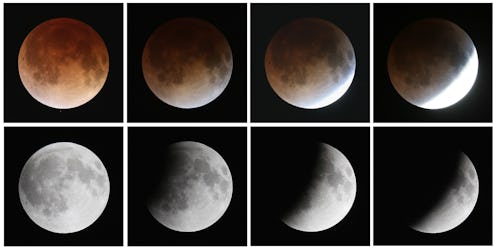
With so much buzz around the forthcoming total solar eclipse Aug. 21, you may have forgotten about the Aug. 7 partial lunar eclipse that precedes it. The solar eclipse will be just under two minutes, but how long is the August 2017 partial lunar eclipse? Solar eclipses always follow lunar eclipses, which last much longer than their sunnier counterparts. The Aug. 7 partial lunar eclipse will last just over five hours, but unfortunately it won't be visible in the United States.
According to information from the website Time and Date, lunar eclipses occur simultaneously around the world, and during this lunar eclipse it will be mid afternoon in the U.S. If you happen to be traveling in parts of Europe, Asia, Australia, Africa, South America, or Antarctica (as so many people do), you will be able to view the moon going dark as it passes in the Earth's shadow. Maybe this is what Pink Floyd had in mind when they wrote "Dark Side of the Moon."
The good news is — if you are an astronomy buff — you can live stream the lunar eclipse thanks to the wonders of modern technology. The full effect of the partial lunar eclipse occurs Aug. 7 at 2:20 p.m. Eastern Time, which is 6:20 p.m. Greenwich Mean Time — the Coordinated Universal Time that all time zones fall before or after.
Lunar eclipses last much longer than solar ones, and there is a scientific reason for this. Because Earth is larger than the moon, its umbra (also known as its shadow) is larger, so that lunar eclipses last longer than solar eclipses, according to Lumen Learning.
"For an eclipse where the moon goes through the center of Earth’s shadow, each partial phase consumes at least one hour, and totality can last as long as one hour and 40 minutes," Lumen Learning explained on its website. "Eclipses of the moon are much more 'democratic' than solar eclipses. Since the full moon is visible on the entire night side of Earth, the lunar eclipse is visible for all those who live in that hemisphere."
If you want to witness a total lunar eclipse you'll get your next chance Jan. 31, 2018 when the next total lunar eclipse will be visible in North America, according to Space.com. Until then, tune into the partial lunar eclipse live stream on Time and Date to get your moon shadow fix.